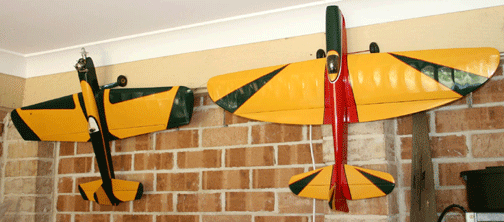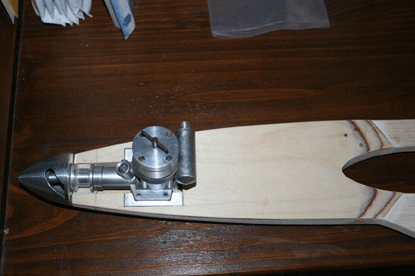

Hi all,
I got this letter in response to my diesel articles. Check it out diesel lovers or those who may be considering it. I sure am glad we added the new diesel rule (8.2 Diesel engine bonus. A bonus of 5 points shall be awarded for use of an operating diesel engine) so these guys can compete. Although from what I am hearing, perhaps the 5 extra points aren't needed! HA! Maybe the 5 points are for GUTS not POWER SYSTEM! Enjoy
Hi Alice,
I have been reading your articles on diesel powered models for the past few months with interest, and after reading Nov/Dec issue of Stunt News I thought I would share my interests in diesels as well. I don't know if any of what I have typed here is of any use for SN but here it is.
I have been using solely PAW diesels in my models for quiet are lot of years now, I'm only are social flier and fly combat using the PAW 15 ball raced combat tuned diesels which are a very strong performers, but with all PAW's this type of motor still has the easy handling and starting characteristics as all the other set-ups.
I have also mailed you pictures of are couple of my 15 size stunters that I built are while back now which are PAW diesel powered. One is the Jr. Nobler and the other is the Baby Bird which is basically are reduced size version of the famous Thunderbird.

The upright open cowled configuration of the Jr. Nobler works very well with the diesel and I have never had any problems with engine runs on any manoeuvre that you may put it through.
The Baby Bird on the other hand with the inverted tightly cowled engine set-up is are little different in that it's harder to start from cold as priming can be awkward due to access.
Some people might think, well, team race models are fully cowled inverted motors and they are very reliable starters and yes they have to be due to the nature of the event.
The reason being is tank position, TR models have the tank high and so the fuel feed is above the spray bar so you have gravity fuel feed straight to the motor.
As us stunt people know, we have the tank and spray bar in alignment for consistent engine runs when flying level or inverted, so we lose that luxury of gravity feeding when starting.
What this means is that my helper needs to hold the model inverted so as to prime the motor using the prime bottle and start and adjust in this position also.
The internal configuration to the cowl also closely follows that of team race model to avoid serious overheating.
Basically you will have are full depth air inlet with the internal side walls about 0.8mm to 1.0mm clearance away from the cylinder, this will force the cool air in between the cooling fins for optimum cooling then this now hot and expanded air needs to leave the cowl through and outlet 30 to 50% larger than the inlet.
As Mick Taylor (see previous SN article) has already stated and that is the best overall set-up would be the side mounted position.
I'm currently building the SIG Banshee, which I have also left photo with you, and will be powered with a PAW 35.
 Another point of importance to take notice of when using
diesels and that is they are heavier than glows, especially if your considering
building are well established type of vintage stunt model that
was based around say the Fox 35.
Another point of importance to take notice of when using
diesels and that is they are heavier than glows, especially if your considering
building are well established type of vintage stunt model that
was based around say the Fox 35.
The Fox 35 is shown on my Banshee plan also, and this motor must be close to half the weight of the 35 diesel. So one must make small changes to maintain correct CG of model.
Thanks & regards
-- Steve Betts
Enjoy!

This page was updated Jan. 19, 2008